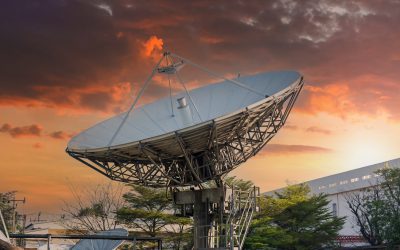Creating a ham radio station doesn’t have to break the bank. With careful planning and smart choices, you can set up an efficient and effective station without overspending. In this guide, we’ll explore how to build a budget-friendly ham radio station, covering essential equipment, tips for finding affordable gear, and strategies for maximizing your investment.
Understanding Budget-Friendly Ham Radio Equipment
1. Transceiver
The transceiver is the heart of your ham radio station. For budget-conscious operators, there are several affordable options that provide excellent performance without the high price tag. Consider looking for used equipment or older models that still offer reliable operation.
2. Antenna
An effective antenna is crucial for good communication. Building your own antenna can save money and provide a rewarding DIY experience. Simple designs like dipole antennas are cost-effective and perform well for beginners.
3. Power Supply
A stable power supply is essential for your transceiver. Look for used power supplies or consider repurposing a computer power supply. Ensure it meets the voltage and current requirements of your radio equipment.
4. Coaxial Cable and Connectors
Quality coaxial cable and connectors are necessary for connecting your antenna to your transceiver. While it’s tempting to go for the cheapest option, investing in decent quality cable and connectors will improve signal strength and reliability.
5. Accessories
Accessories such as microphones, headphones, and SWR meters enhance your ham radio experience. Look for bundled deals or second-hand options to keep costs down.
Finding Affordable Ham Radio Gear
Here are some tips for finding budget-friendly ham radio equipment:
1. Online Marketplaces
Websites like eBay, Craigslist, and Facebook Marketplace often have listings for used ham radio gear at lower prices. Be sure to check seller ratings and ask questions to ensure the equipment is in good condition.
2. Ham Radio Clubs and Swap Meets
Local ham radio clubs and swap meets are excellent places to find affordable equipment. Members often sell or trade gear at reasonable prices, and you can benefit from their expertise and advice.
3. Hamfests
Hamfests are events where ham radio enthusiasts gather to buy, sell, and trade equipment. Attending a hamfest can help you find great deals and network with other operators.
4. Online Retailers
Some online retailers offer budget-friendly ham radio equipment. Brands like Baofeng, TYT, and Xiegu provide affordable transceivers and accessories suitable for beginners.
DIY Ham Radio Projects
Building your own equipment can save money and provide valuable hands-on experience. Here are some budget-friendly DIY projects:
1. Homemade Antennas
Building antennas like dipoles, verticals, or even loop antennas can be cost-effective and fun. Use materials like PVC pipes, wire, and coaxial cable to create efficient antennas at a fraction of the cost of commercial ones.
2. Kits and Homebrew Radios
Many ham radio kits are available that allow you to build your own transceiver or other equipment. Kits from companies like QRP Labs and Elecraft are popular among DIY enthusiasts.
3. Repurposing Old Electronics
Repurposing old electronics, such as computer power supplies or audio equipment, can save money and reduce waste. With some modifications, these items can serve as functional components of your ham radio station.
Maximizing Your Budget
Here are some strategies to make the most of your budget:
1. Start Small and Expand
Begin with the basics and expand your setup over time. Focus on getting a reliable transceiver and antenna first, then add accessories and additional equipment as your budget allows.
2. Prioritize Quality Over Quantity
Invest in a few high-quality pieces of equipment rather than many cheap items. Quality gear will perform better and last longer, ultimately saving you money in the long run.
3. Learn and Network
Educate yourself about ham radio through online resources, books, and local clubs. Networking with experienced operators can provide valuable advice and help you avoid costly mistakes.
4. Buy Used Equipment
Used equipment can offer significant savings. Ensure you buy from reputable sellers and inspect the gear thoroughly before purchasing.
5. Utilize Free Resources
Take advantage of free resources such as online forums, YouTube tutorials, and ham radio blogs. These resources can provide guidance and support without any cost.
Setting Up Your Budget-Friendly Ham Radio Station
Step 1: Plan Your Station
Determine your goals and needs for your ham radio station. Consider the bands you want to operate on, the space available for your setup, and your budget constraints.
Step 2: Acquire Equipment
Start by acquiring the essential equipment: transceiver, antenna, power supply, and coaxial cables. Look for deals on used gear and consider DIY projects to save money.
Step 3: Install Your Antenna
Install your antenna in a suitable location, such as on your roof or in your yard. Ensure it is properly grounded and positioned for optimal performance.
Step 4: Set Up Your Transceiver
Connect your transceiver to the power supply and antenna. Configure the settings according to the manufacturer’s instructions and perform initial tests to ensure everything is working correctly.
Step 5: Test and Optimize
Test your setup by making contacts and adjusting your antenna for the best performance. Use an SWR meter to fine-tune your antenna and ensure efficient signal transmission.
Step 6: Expand and Improve
As you gain experience and resources, consider expanding your station with additional accessories, better antennas, or higher-end transceivers. Continuously seek ways to improve your setup and enhance your ham radio experience.
Building a budget-friendly ham radio station is a rewarding and achievable goal. By prioritizing essential equipment, seeking out affordable gear, and engaging in DIY projects, you can create an effective and enjoyable ham radio station without overspending. Remember to start small, prioritize quality, and continuously learn and network within the ham radio community. With dedication and resourcefulness, you’ll be well on your way to enjoying the fascinating world of amateur radio.




